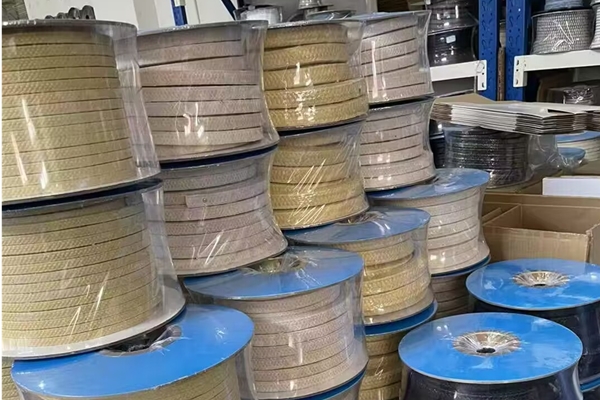The PTFE Bonded EPDM Gasket is distinguished by its unique fusion bonding process, which tightly integrates polytetrafluoroethylene (PTFE) plastic with synthetic rubber to create a solid composite structure. This type of gasket combines the excellent chemical resistance of PTFE with rubber’s elasticity and sealing properties, making it particularly suitable for applications that require resistance to chemical media and high elasticity. Here are the primary advantages and application conditions:
PTFE Bonded EPDM Gasket Advantages:
Chemical Resistance: PTFE exhibits excellent resistance to nearly all chemical media, making these gaskets ideal for sealing in environments involving strong acids, bases, and chlorine gas.
Non-Toxicity: These gaskets meet sanitary requirements, making them suitable for use in the food and pharmaceutical industries.
Anti-Adhesive Properties: PTFE’s low friction and non-stick surface reduce the adhesion of media and minimize wear on the gasket.
Elasticity and Sealing Performance: The composite rubber material provides good compressibility and rebound properties, significantly enhancing the gasket’s sealing capability.
PTFE Bonded EPDM Gasket Operating Conditions:
Pressure: The gaskets can withstand working pressures of up to PN ≤ 25 bar.
Temperature: They are suitable for working temperatures of up to ≤ 130°C.
PTFE Bonded EPDM Gasket Structural Designs:
Cut Type: This design is economical and suitable for low-pressure applications.
Machined (Square): These are formed by mechanical turning and are suitable for medium to high-pressure environments.
Folded Type: Made by folding and heat bonding, suitable for larger diameters (>200mm).
Key Performance Features
Reduced Cold Flow: The unique structural design of the PTFE Bonded EPDM gasket effectively minimizes cold flow phenomena, enhancing longevity and stability under high temperature and pressure conditions.
Blowout Resistance: Due to its high strength and ability to compress and rebound, the PTFE Bonded EPDM gasket can withstand the risk of media blowout in high-pressure environments, maintaining reliable sealing performance.
Good Mechanical Properties: The PTFE Bonded EPDM gasket retains good compressibility, rebound, and compensation capabilities under high pressure and complex conditions, ensuring efficient sealing even in demanding environments.
PTFE Bonded EPDM Gasket Application:
PTFE Bonded EPDM gaskets are compatible with a variety of materials and piping systems, including:
PTFE (Polytetrafluoroethylene)
PVDF (Polyvinylidene Fluoride)
PPH (Polypropylene Homopolymer)
PVC (Polyvinyl Chloride)
CPVC (Chlorinated Polyvinyl Chloride)
Cast Iron and Ductile Iron, Fiberglass
Broad Industry Applications
PTFE Bonded EPDM Gaskets are widely used in various industries, including:
Steel and Metallurgy
Petroleum and Chemicals
Semiconductors and Polysilicon
Organic Silicones and Fertilizers
Dyes and Pharmaceuticals
Electric Power and Environmental Waste Treatment
Labyrinth Seal Ring Design
The raised sealing ring on the gasket creates a multi-path labyrinth seal structure, which reduces the contact area between the gasket and the flange while maintaining a high sealing compression ratio. This design can reduce the bolt torque load required to achieve sealing by up to 75%, significantly improving operational efficiency and sealing performance.
100% Pure PTFE Sealing Surface
Pure PTFE offers outstanding chemical resistance and ensures a clean, pollution-free sealing surface. This feature makes it especially suitable for applications requiring high purity and strict sanitary standards, such as those in the pharmaceutical and food industries.
Conclusion:
PTFE Bonded EPDM gaskets, with their superior material choices and structural designs, are especially suited for complex operational conditions and high chemical resistance requirements. They reduce cold flow, enhance blowout resistance, and maintain efficient sealing capabilities, making them an ideal sealing solution in industries like steel, chemicals, and environmental protection.




